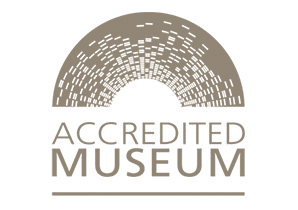
Nature & Sustainability
Our natural history
Ten to twenty million years ago, the bed of the tropical seas around Amberley was forced 180 metres upwards by a huge collision of tectonic plates. The South Downs were formed. The hills here are chalky, composed of layer upon layer of calcium. This came from the skeletons of algae that had swirled in the sea in their trillions before dying and sinking to the bottom and compacting over time.
Between then and now, the chalk of the South Downs has defined the local landscape. People living in the Neolithic period of prehistory (5,500-3,200 years ago) mined it for flint – a precious resource for toolmaking – at nearby Blackpatch Hill. Local farmers have quarried chalk since at least the 1200s, but probably since the Roman era, for use as agricultural fertiliser and to make mortar for building. This industry grew with the installation of the Wey & Arun Canal in 1816 and the railway in 1863. The quarrying operation run by Pepper and Son between the 1870s and 1960s transformed the site you see today into a white moonscape, regularly blasted by explosions to extract tons of chalk at a time.
After the quarry was closed once and for all in the late 1960s, nature immediately reclaimed the area – first chalk-loving pioneer plants including many orchids, then trees, shrubs and the associated invertebrates, birds, mammals and more. Today, the museum site is bursting with natural life across a range of habitats and is a Local Wildlife Site.
Our Goals
Nature recovery
– Our management of vegetation on site ensures that nature can thrive in areas where it doesn’t interfere with the heritage we preserve, or with visitor access.
Carbon emission reduction
– Our bank of solar panels on the Connected Earth exhibition building generates over 30,000 kWh of electricity a year.
– We have an electric vehicle charging point in our car park and encourage visitors and volunteers to travel by train.
– We use an electric cargo tricycle to move items around site, reducing localised air pollution.
Waste reduction and procurement
– We have worked to reduce use of single-use plastics in our café and retail spaces.
– We repurpose materials as often as possible, repairing instead of buying new as a rule.
– Second-hand donated items are given a new life through our Friends of Amberley Museum shop, which raises money to fund small projects on site.
Public engagement
– We administrate a public project on the citizen science website, iNaturalist, where people can explore wildlife sightings made by staff and volunteers. This data helps us keep our nature board up to date and feeds into databases used by scientists to understand how species populations are changing.
– Visitors can appreciate nature on our two nature trails and learn about climate change by reading the accompanying interpretative panels.
– We run annual events relating to various aspects of nature and climate.
Our Partners
We are actively reaching out to local specialists and community groups to better understand our site’s biodiversity and ecological value. Groups we have worked with include:
– South Downs National Park Authority
– Sussex Botanical Recording Society
– Sussex Wildlife Trust, Storrington & Arun Valley Regional Group











